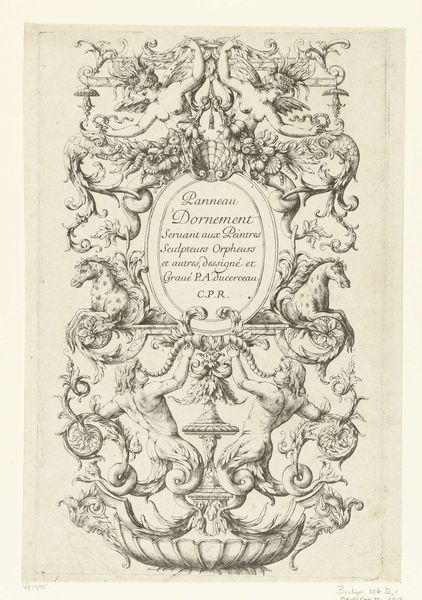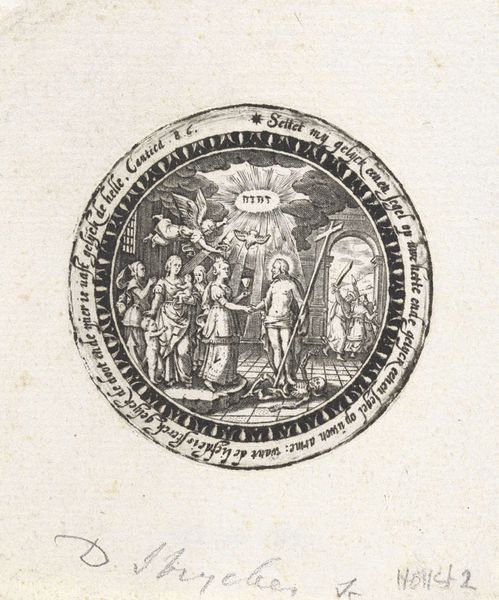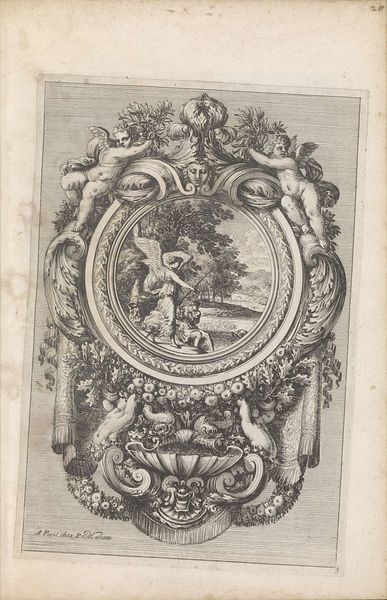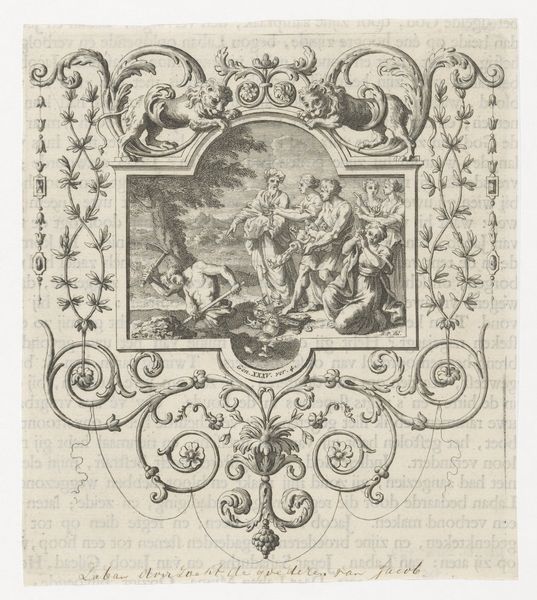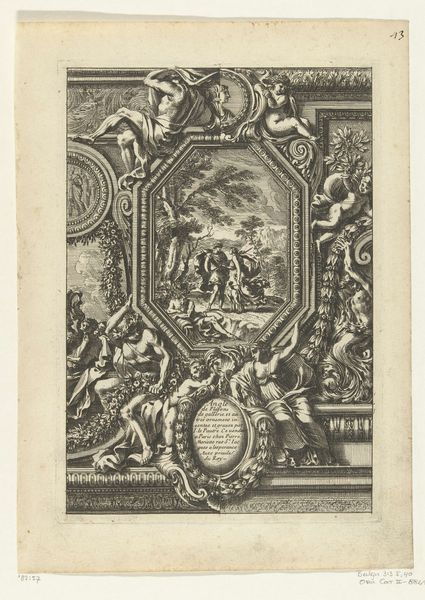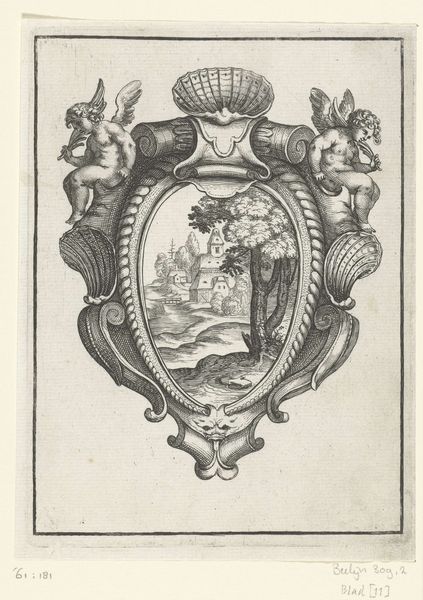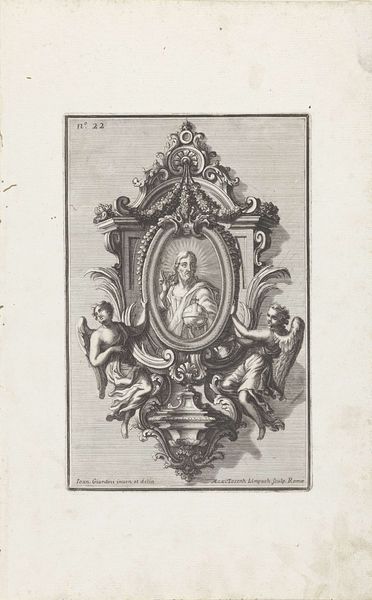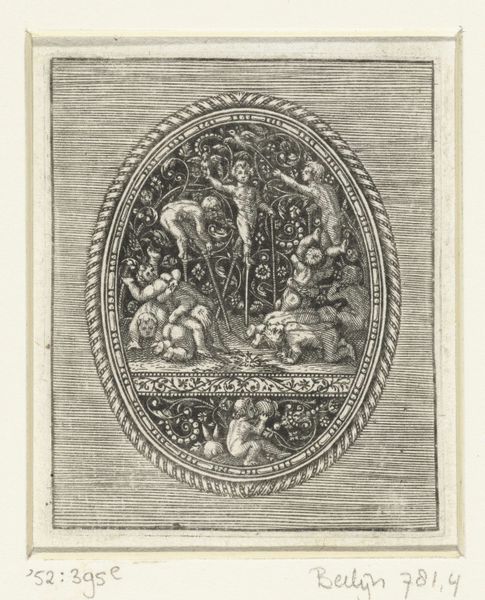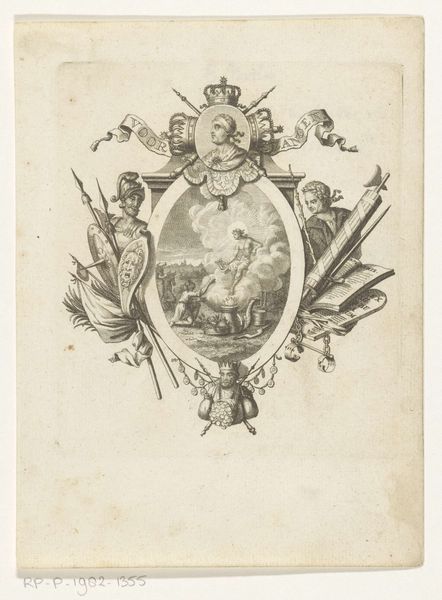
print, engraving
#
allegory
#
baroque
# print
#
old engraving style
#
nude
#
engraving
Dimensions: height 89 mm, width 66 mm
Copyright: Rijks Museum: Open Domain
This is Abraham van den Hecken's "Horlogedeksel met een sater en een nimf," a decorative clock cover created in the 17th century. Van den Hecken worked during the Dutch Golden Age, a period marked by both unprecedented economic prosperity and intense social stratification. The engraving depicts a satyr and a nymph surrounded by cherubic figures. The idyllic scene, framed by the Latin inscription "SUPER TERRAM. *UT HORA SIC DIES NOSTRI," reminds us that our days on earth pass like hours. Representations of nymphs and satyrs were common at the time, often deployed to convey moral or allegorical messages. However, these depictions were frequently rooted in male fantasies and assumptions about female sexuality. It is important to consider the socio-economic context in which van den Hecken produced this work. The rising merchant class in the Netherlands sought luxury goods and decorative items for their homes. This piece reflects the era's fascination with classical mythology, but also its complex relationship with gender and morality. It invites us to reflect on the passage of time, even as it subtly perpetuates the power dynamics of its era.
Comments
No comments
Be the first to comment and join the conversation on the ultimate creative platform.
